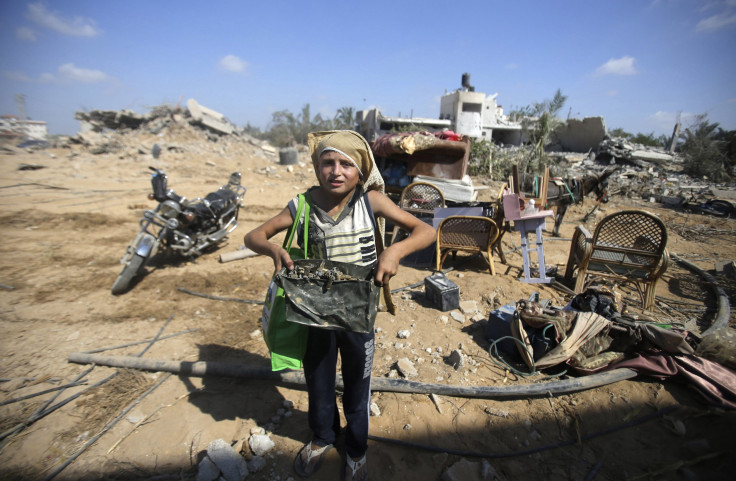Gaza Teens, Like September 11 New Yorkers, Experience PTSD Following Exposure To Artillery Shelling

Most of us are familiar with post-traumatic stress disorder (PTSD) through the eyes and experiences of soldiers returning from warzones. But what of those who live in areas of conflict and unavoidably dwell among violent encounters and its lingering ruins?
Examining Palestinian teens, University of Leicester researchers, who have been collaborating with colleagues in Gaza for the past 15 years, found exposure to the sites of confrontation has a lasting and damaging effect on young people. “All studies have consistently shown the impact of war trauma,” said Professor Panos Vostanis from the University of Leicester’s Greenwood Institute of Child Health. “Each cycle of violence has a cumulative effect on children and young people.”
Civilian Suffering and PTSD
Worldwide, those who experience or witness violence firsthand, whether they be rape victims, soldiers, or civilians living in warzones, are known to be at increased risk of PTSD. As defined by the Israel Center for the Treatment of Psychotrauma, three main symptoms are:
- re-experiencing (a feeling of the trauma as recurring)
- avoidance (a strong impulse to avoid anything that has to do with the traumatic experience)
- hyper-arousal (constant feelings of alertness, nervousness, and difficulty concentrating)
Your body's involuntary response coupled with basic brain biology are the basis for PTSD. Anticipating, witnessing, or experiencing some frightening event, your natural "fight or flight" response — actually, a sudden deluge of stress hormones in your nervous system — incapacitates certain areas of your brain, including parts of the cerebral cortex. With normal function disabled, your brain is unable to process the experience in its usual way. Essentially, the memory does not form and make the journey to long-term storage. Instead, the trauma unexpectedly returns on occasion, not as a mere memory, but as life re-lived.
PTSD, then, is a random, inescapable recurrence of all your past fear. That said, researchers have found the prevalence of PTSD declines steadily in the months and years after a traumatic event, especially for those who can return to normal routines. Scientific American notes the rates of PTSD among the general population of New York eased from about 5.0 percent a year after the Sept. 11 attacks to 3.8 percent two years later.
For the current study of Palestinian teens, the team of researchers investigated types of traumatic events experienced in Gaza in relation to PTSD, anxiety, and coping strategies. Of the 358 teens between 15 and 18, the majority had witnessed mutilated bodies on TV, had been exposed to heavy artillery shelling, had seen evidence of shelling, and had heard sonic sounds from jetfighters.
The painful result? Many of these teens, the researchers say, have developed a range of long-lasting emotional and behavioral problems, including anxiety disorders, with females reporting a greater number of PTSD symptoms than males. “The toll on the mental health of these young people tends to be exacerbated by poverty, which is endemic in Gaza,” Vostanis said. “It's a double whammy for many of them.” Words likely to be true of most people living in warzones worldwide — the unfortunates who cannot escape the horror surrounding them.
Source: Thabet A, EL-Buhaisi O, Vostani P. Trauma, PTSD, Anxiety and Coping Strategies among Palestinians Adolescents Exposed to War in Gaza. Arab Journal of Psychiatry. 2014.



























